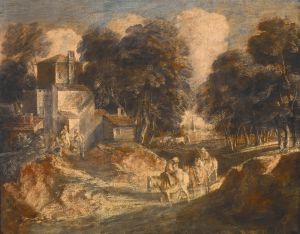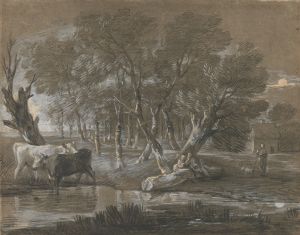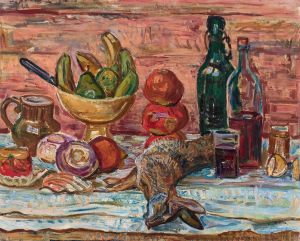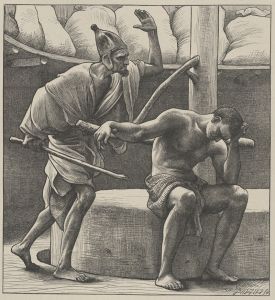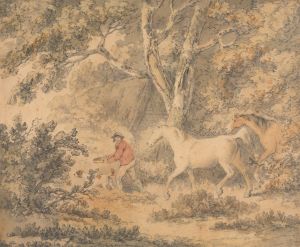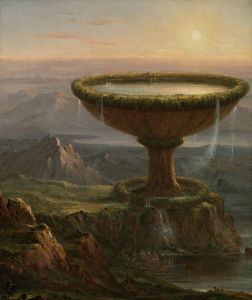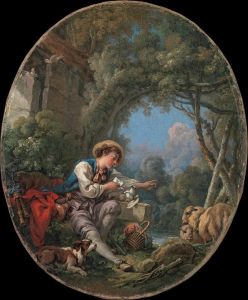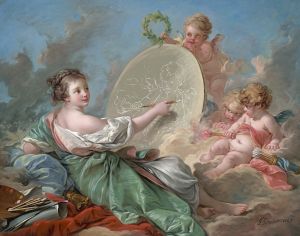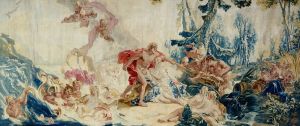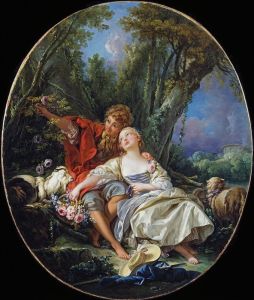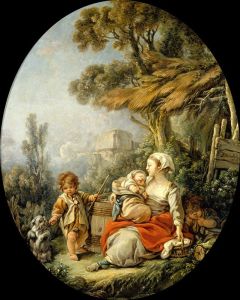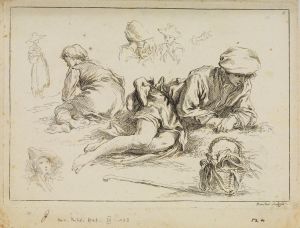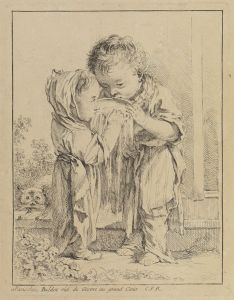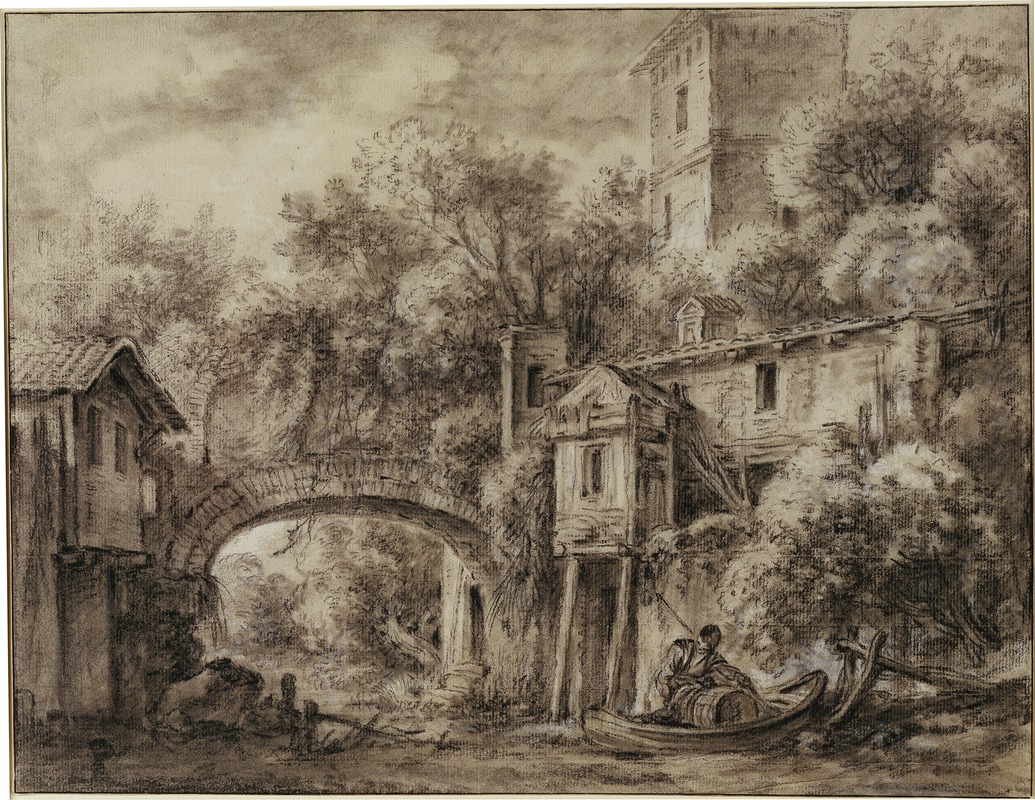
Architekturcapriccio mit der Mühle von Quiquengrogne bei Charenton
A hand-painted replica of François Boucher’s masterpiece Architekturcapriccio mit der Mühle von Quiquengrogne bei Charenton, meticulously crafted by professional artists to capture the true essence of the original. Each piece is created with museum-quality canvas and rare mineral pigments, carefully painted by experienced artists with delicate brushstrokes and rich, layered colors to perfectly recreate the texture of the original artwork. Unlike machine-printed reproductions, this hand-painted version brings the painting to life, infused with the artist’s emotions and skill in every stroke. Whether for personal collection or home decoration, it instantly elevates the artistic atmosphere of any space.
François Boucher, a prominent French painter of the Rococo style, is known for his idyllic and voluptuous paintings, which often depict classical themes, pastoral scenes, and mythological subjects. One of his works, "Architekturcapriccio mit der Mühle von Quiquengrogne bei Charenton," showcases his skill in combining architectural elements with landscape painting.
This painting, whose title translates to "Architectural Capriccio with the Mill of Quiquengrogne near Charenton," is an example of Boucher's ability to blend real and imagined elements. The term "capriccio" refers to a type of painting that combines architectural fantasy with elements of reality, often featuring whimsical or fantastical structures. In this work, Boucher presents a picturesque scene that includes the mill of Quiquengrogne, a real location near Charenton, a suburb of Paris.
Boucher's painting style is characterized by its lightness, grace, and use of soft colors, which are evident in this work. The composition likely includes a harmonious blend of natural and architectural elements, with the mill serving as a focal point amidst an idealized landscape. The painting reflects the Rococo aesthetic, which favored ornate and decorative art that was often playful and light-hearted.
The mill of Quiquengrogne itself was a notable landmark, and its inclusion in the painting suggests Boucher's interest in capturing both the charm of the French countryside and the architectural beauty of the period. The painting may also reflect the 18th-century fascination with rural life and the pastoral ideal, themes that were popular among the aristocracy and art patrons of the time.
Boucher's work was highly sought after by the French court, and he enjoyed the patronage of influential figures such as Madame de Pompadour, the official chief mistress of King Louis XV. His paintings were celebrated for their decorative qualities and their ability to transport viewers to a world of elegance and beauty. "Architekturcapriccio mit der Mühle von Quiquengrogne bei Charenton" would have appealed to the tastes of the Rococo period, which valued art that was both visually pleasing and evocative of an idealized, carefree existence.
While specific details about this particular painting's provenance or current location may not be widely documented, it remains an example of Boucher's artistic legacy and his contribution to the Rococo movement. His works continue to be studied and admired for their technical skill, imaginative compositions, and their reflection of the cultural and artistic trends of 18th-century France.
In summary, François Boucher's "Architekturcapriccio mit der Mühle von Quiquengrogne bei Charenton" exemplifies the Rococo style through its blend of fantasy and reality, its elegant composition, and its reflection of the period's artistic tastes. The painting captures the essence of Boucher's work, which remains influential in the history of art.





